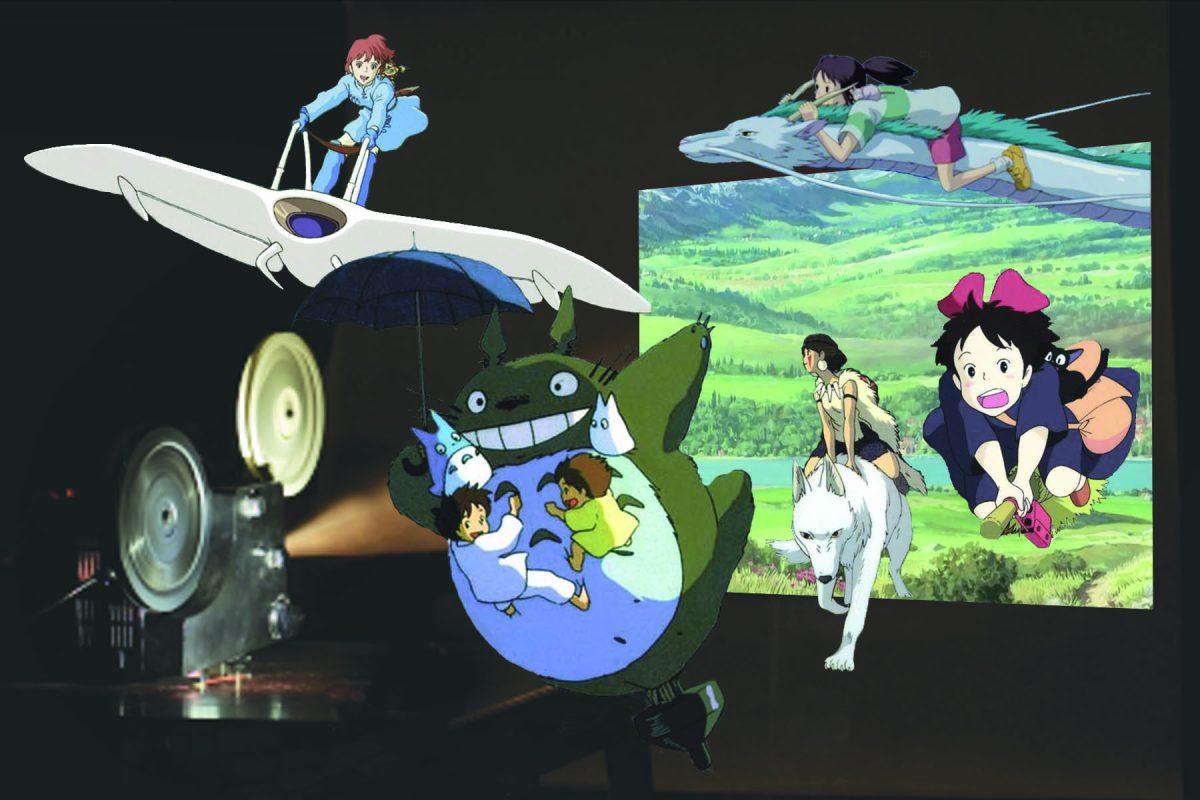Anime aficionados, professors to speak at Forth Worth film series focused on Japanese animator Hayao Miyazaki
Acclaimed animator Hayao Miyazaki’s films will be the star attraction at Fort Worth’s Modern Art Museum, and two faculty members will lead discussions around the Japanese artist’s most-recognized characters and stories as part of the film series.
Although Marc Hairston is a research scientist for the William B. Hanson Center for Space Sciences, his fascination with anime has made him somewhat of a specialist on the subject.
He first discovered Japanese animation back in the early ‘90s.
“I was aware of it, but it just wasn’t available in the U.S. before that time,” Hairston said. “What little stuff was brought over commercially were things like ‘Astro Boy’, ‘Eightman’ and ‘Battle of the Planets.’”
Hairston met Pamela Gossin, a humanities professor focusing on the relationship between literature and science, in 1998 and suggested she use Miyazaki’s films in her classes.
Gossin was teaching a course on the “nature of nature” and Hairston sat in. He thought her curriculum could benefit from the messages in Miyazaki’s “Nausicaä of the Valley of the Wind,” which involves a young woman fighting to find balance between the manmade and natural world.
They have been teaching courses focusing on Miyazaki’s work, anime, science fiction and fantasy on and off ever since.
Gossin describes the two professors’ seemingly opposing fields as a surprisingly complementary pairing. Hairston focuses on the technological details and minutia of the animes, while Gossin focuses on the themes and visual motifs.
“Students get a full spectrum of approaches to the material, from uber-geek on the science side to uber-geek on the lit side,” she said. “I think students actually appreciate that because then they see Marc and me interact and say, ‘Hey, a lit prof can actually speak to a scientist and vice versa.’ I think that ends up being the most powerful message beyond any specific thing we might say about a film.”
Miyazaki’s films have been gaining more and more attention from the U.S. public over the years, and he is arguably the most recognizable Japanese animator.
The phenomenon is helped due in part to excellent marketing, Hairston explains.
“In Japan, he’s a household name, but he was somewhat of an unknown when Disney bought the rights to bring his films to the United States,” he said. “They were actually frustrated because they wanted the video rights to family-friendly films like ‘Totoro’ and ‘Kiki’s Delivery Service,’ too.”
The first film that Miyazaki brought to the United States when Disney bought the rights was “Princess Mononoke,” and they bought the film sight unseen believing they could handle another simple princess movie.
It wasn’t until Disney executives saw the trailer complete with samurais and sword fighting that they realized this wasn’t the usual American cartoon.
Hairston said it was a real problem for Disney to market it at first because it was simply so different. Miyazaki is popular in Japan because its fantastical elements attract children and adults alike.
It wasn’t until Spirited Away won the Academy Award that the floodgates opened and Miyazaki’s backlog became popular in the United States.
What makes his films unique is their complicated nature, Gossin said.
“You can’t immediately divide the world into good and evil,” she said. “You can’t predict very well where the plot is going. (Viewers) have to pay attention to nuances within every individual character.”
Hairston agrees.
“On of my favorite stories is of a friend of mine who showed (Princess Mononoke) to her father when it came out on video and they were about halfway through it when he turned to her and said ‘I give up, whose side am I supposed to be on?’”
The depth of Miyazaki’s films allows the two professors to create vivid discussions on science, the human condition and the natural world.
During her short introduction for “Nausicaä of the Valley of the Wind” at the Modern, Gossin plans on talking about Miyazaki’s concerns for the environment.
“One of the biggest things people notice is a deeply-seeded eco-philosophy,” Gossin said. “He is trying to get people to understand that we’ve had a long history of exploiting natural resources, and that we may be at an endgame.”
The Modern will be playing many of Miyazaki’s classic films including “Spirited Away” and “My Neighbor Totoro” on select dates from Aug. 2 to Aug. 23. Gossin and Hairston will help introduce each of the films.







